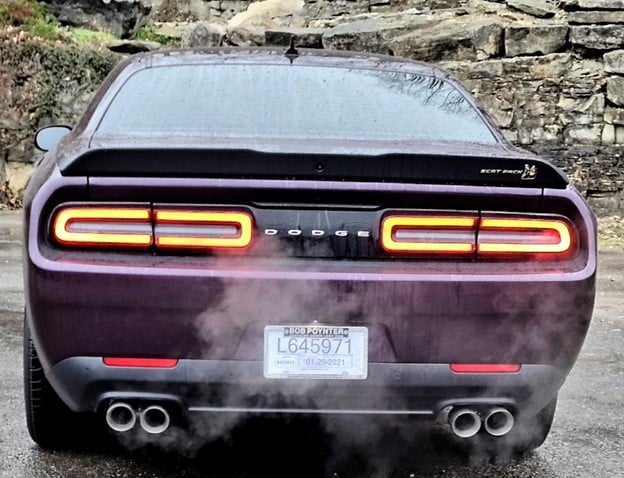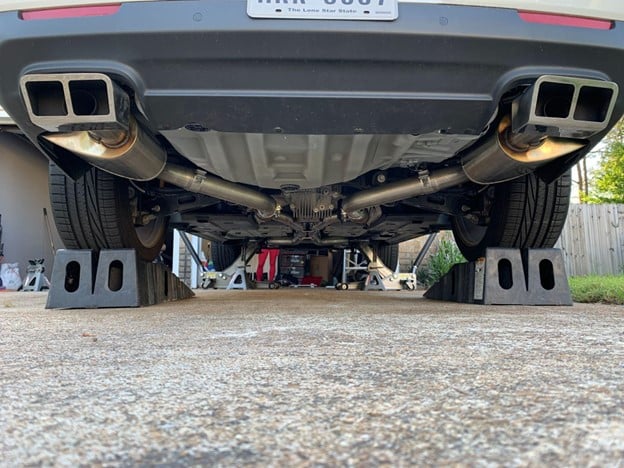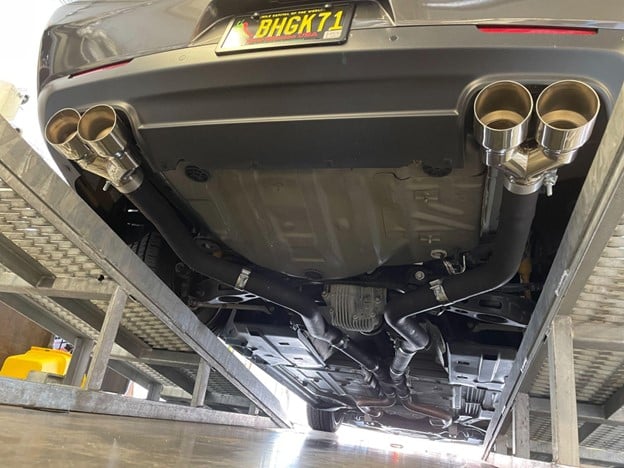
Everything You Need to Know About the Dodge Challenger Exhaust System

The Dodge Challenger is a synonym for the American muscle car. In part, it's due to its unmistakable, bulky, and aggressive design, as well as the large displacement engines. Perhaps even more important aspect has always been the exhaust system.
The Stock Challenger Exhaust System
From the factory, the Dodge Challenger comes equipped with a performance-tuned exhaust that varies depending on the engine and trim level. In V6 models like the SXT and GT, the system is relatively conservative and tuned for a smooth and restrained sound to match the vehicle’s more reserved nature. These versions typically feature a single or split dual exhaust layout, with resonators and mufflers keeping cabin noise to a minimum, while still providing an adequate sound note for a sports coupe.
Move up to the V8-powered Challengers, such as the R/T, Scat Pack, and SRT Hellcat, and the factory exhaust becomes something completely different. These are far from just “adequate”. Using dual exhaust setups, the engines can breathe more freely, with less backpressure. Still, not all V8 exhausts are the same. There are actually huge differences between the trims, but regardless of the specifics, they are far more aggressive than the exhausts that come with the V6 drivetrains.
Some of the V8 models are equipped with active exhaust systems, which use electronically controlled valves to alter the exhaust tone based on the driver's preferences. In normal mode, the valves stay partially closed for a quieter sound, but once you press the throttle or switch to Sport mode, the valves open to make the sound as aggressive as possible.
Furthermore, the factory exhausts use catalytic converters, resonators, and mufflers, so that they would meet regulations concerning dB levels and emissions. Even with these systems, the exhausts perform well out of the box, but things can always be improved upon - more volume, better flow, different tone.
Types of Aftermarket Exhaust Systems

For those looking to improve upon their stock Challenger exhaust system, there are many viable options. We’ll go over the basic types of aftermarket exhausts below.
Axle-Back Exhaust Systems
A Challenger axle-back system replaces the exhaust components from the rear axle to the exhaust tips. This includes the rear section of piping and the mufflers. It’s the most straightforward and affordable upgrade and is often chosen by owners who primarily want to change their car’s sound. While it doesn’t usually deliver major performance improvements, a quality axle-back system can enhance tone and volume, giving the car a deeper and more aggressive presence without being too “invasive” or costly.
Cat-Back Exhaust Systems
Dodge Challenger cat-back systems go a step further, replacing everything from the catalytic converters to the rear of the vehicle. This includes mid-pipes, resonators, and mufflers. The primary benefit of a cat-back system is improved exhaust flow, which can lead to (modest) increases in horsepower and torque.
Cat-back systems are available in various pipe diameters and configurations, so it’s important to choose one that matches your preferred sound note and is compatible with your engine. Many aftermarket brands offer tuned cat-back systems specifically designed for the Challenger platform, so it's not much to worry about though.
Header-Back Exhaust Systems
For those who are after maximum flow and performance, a header-back system replaces the entire exhaust system from the headers to the tailpipes. Everything is redone. A header-back system can offer significant performance gains when paired with a proper tune, especially when combined with high-flow headers and a less restrictive layout.
Because you are replacing the entire exhaust system, it gives you loads of room to play with and change the volume and tone of the exhaust to your liking. That also comes with one downside - these systems tend to be the most expensive and labor-intensive.
Straight Pipe and Muffler Delete Setups
Some owners take a more extreme route by installing a straight pipe and removing the mufflers altogether. These setups eliminate all restrictions between the engine and tailpipe, resulting in the loudest possible sound and minimal backpressure. This can be a good thing, but it comes with significant trade-offs. If you’re considering this solution for a daily driver, you'd better skip it. Straight pipes typically tend to drone at constant speeds, making them uncomfortable for commutes. They’re also extremely loud, so not really suitable for quiet neighborhoods.
Bring Your Challenger to the Next Level

Now that you know everything you need about the Dodge Challenger exhaust system, you are ready to bring it to the next level with an appropriate upgrade. For inspiration and to see what aftermarket exhausts we recommend the most, head to our list of best exhaust brands for the Dodge Challenger. Last but not least, don’t hesitate to contact our sales tech team to answer any additional questions you might have and help you pick the right system for your Challenger.